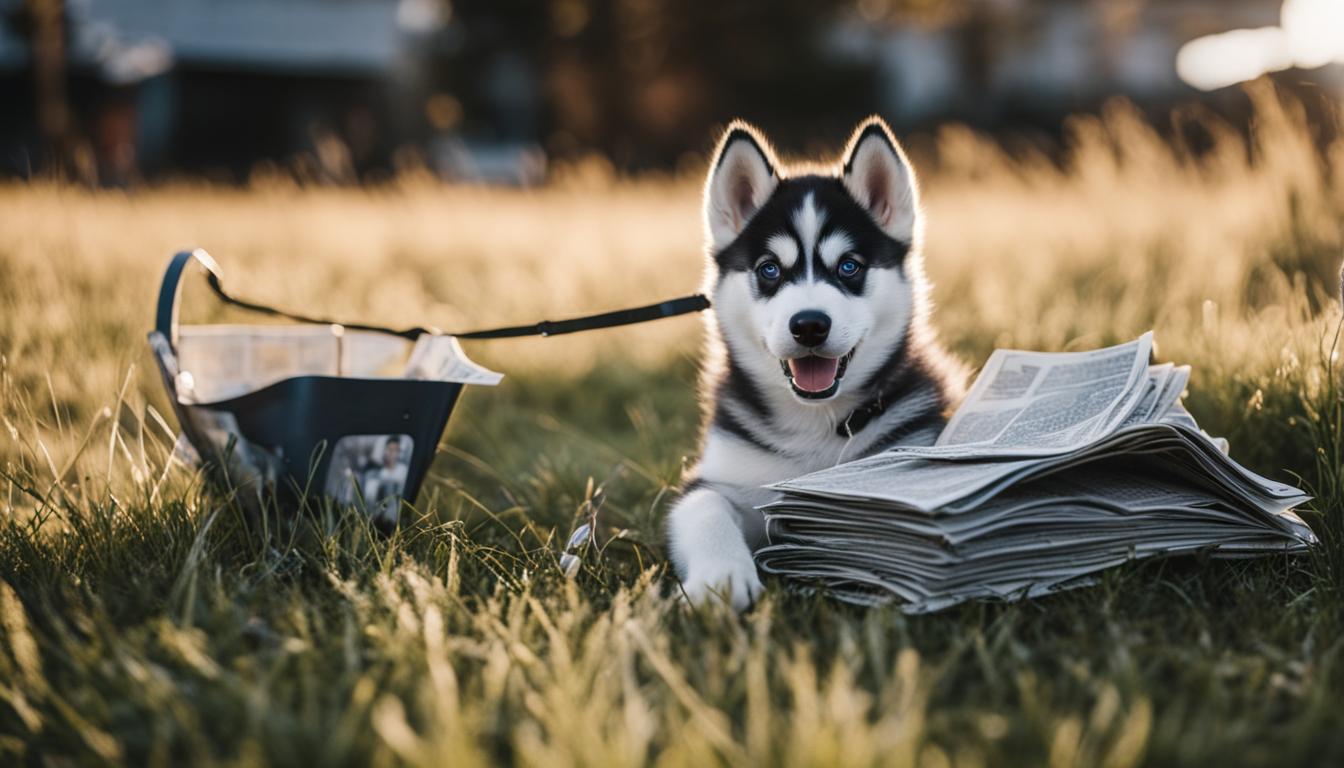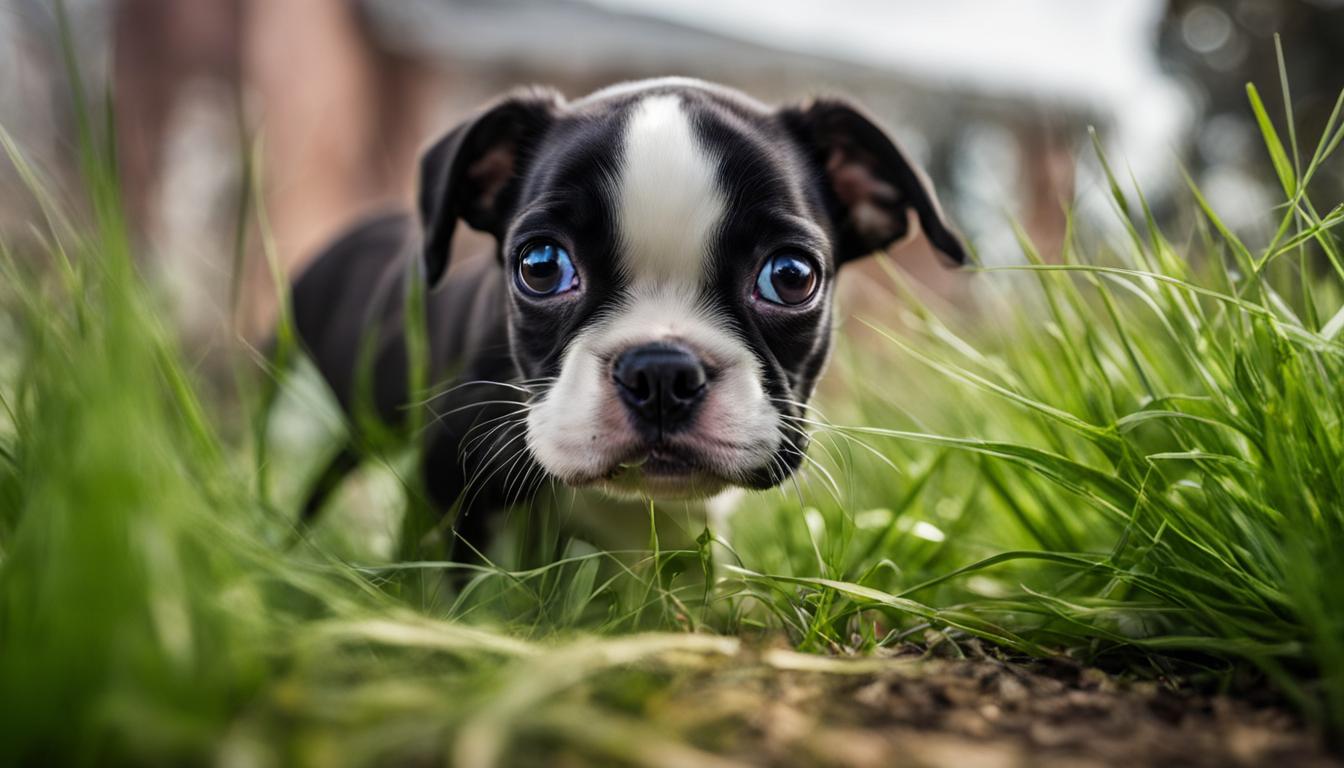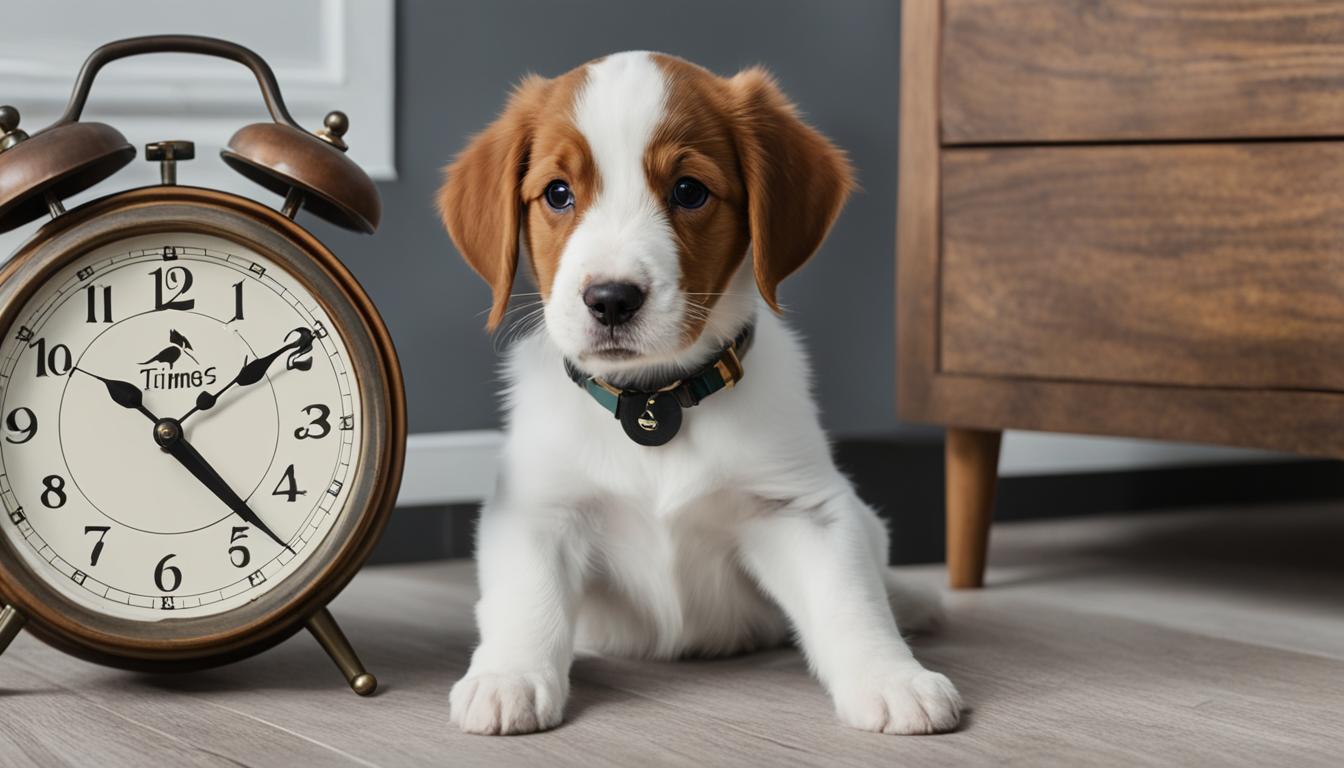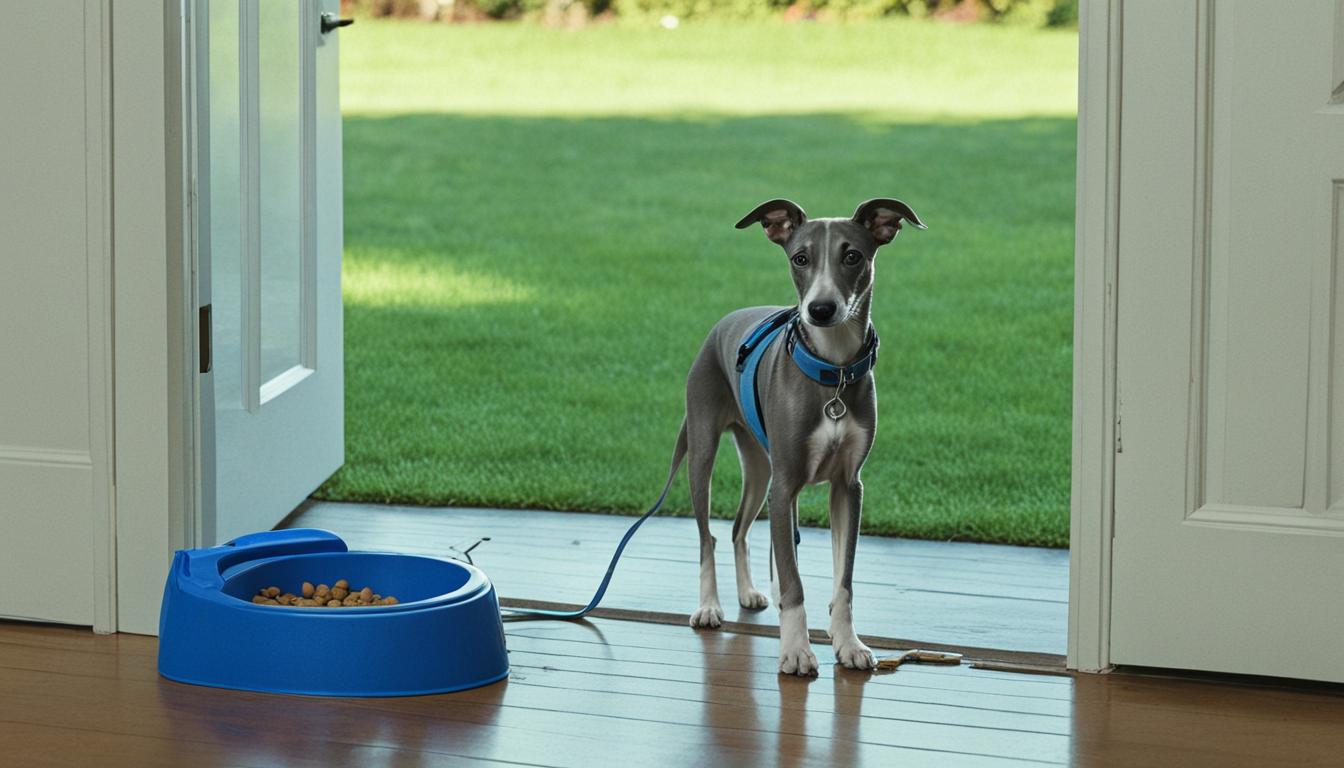Welcome to the world of puppy house training, where your prowess with a consistent potty training regimen can pave the way to a harmonious household and a well-behaved furry companion. You may be wondering how to integrate these practices effectively, especially if you’re the proud owner of a spirited Siberian Husky puppy.
Fear not! With a touch of patience, an understanding of crate training, and steadfast consistency in puppy training, you’re on the right track to success.
Imagine a life where little paws don’t leave unwanted surprises on your floors and where a happy, tail-wagging pup knows exactly where and when to go. You’re not just training your dog; you’re setting the foundation for a trusting and lasting relationship.
So, roll up your sleeves, armed with treats and positivity, as we guide you through each step to ensure your Siberian Husky’s potty training is as smooth as their majestic coat.
What Are The Benefits of Potty Training Your Siberian Husky Puppy?
The journey of bringing a new Siberian Husky puppy into your home comes with the responsibility of teaching them the ins and outs of proper bathroom etiquette. By dedicating time to establish a solid potty routine, you reap the multifaceted benefits of potty training, which extend well beyond the obvious. Let’s explore these advantages that await both you and your furry companion.
First and foremost, maintaining clean floors is not just about aesthetics; it’s about health. As a potty-trained Husky learns to do their business outside, you can bid farewell to the unpleasant task of cleaning messes off your floors. This limits household exposure to bacteria and contributes to a safe environment for everyone, including your other pets and potentially little ones crawling around.
- Clean and Hygienic Home: No more surprises on the carpet or odors lingering in corners.
- Reduced Stress: You and your Husky can relax, knowing that your home is free from accidents.
- Curtail Cleaning Costs: Save on cleaning products and services with a well-trained Husky.
Moreover, enriching your puppy’s life with regular playdates becomes a breeze. Without the concern of accidents, your pup can freely enjoy the company of other dogs and humans, enhancing their social skills and well-being without jeopardizing the cleanliness of someone else’s home. And speaking of going places, you can take car rides without fretting over your upholstery – a well-established potty routine minimizes the likelihood of those not-so-fun car cleanups.
Lastly, the process of potty training fortifies the bond between you and your pup. As you guide them with patience and consistent reinforcement, the mutual trust and understanding you develop become the foundation of a lifelong, stress-free friendship.
Remember, a potty-trained Husky not only makes your life simpler, but it also sets the stage for a happy, hygienic, and harmonious household. It’s a gift that keeps on giving long after the training treats have been tucked away.
How to Potty Train a Siberian Husky Puppy (Step-by-Step)

Potty training your Siberian Husky puppy doesn’t have to be a daunting task. With a little patience and the right strategies, you can establish a successful potty break routine. Establishing a designated potty area, recognizing your puppy’s cues when they need to go, and providing routine reinforcement are all key aspects of the training process. Ready to start?
Let’s break down the steps for you.
Step 1: Master The Basics of Potty Training a Puppy
First and foremost, familiarize yourself with the best practices for potty training. Consistency is the name of the game here. By keeping meals, playtime, and potty breaks on a regular schedule, you help your puppy establish a reliable routine.
Step 2: Choose The Designated Puppy Potty Area
When it comes to finding the perfect spot for your puppy’s bathroom breaks, pick a place that is not only safe but convenient for frequent visits. This designated potty area will become familiar ground, making the process smoother for both of you.
Step 3: Set a Potty Break Schedule
Active puppies have small bladders. By creating a schedule for potty breaks that aligns with their natural needs—such as first thing in the morning, after meals, and before bedtime—you increase the chance of successful outdoor trips.
Step 4: Look for Visual Cues Such as Sniffing, Circling or Whining
Recognizing puppy cues is pivotal. Pay attention to your Husky’s behavior; sniffing around or circling could signal they’re ready for a potty break. Quick detection and response to these cues prevent indoor accidents.
Step 5: Take Your Puppy Out to The Designated Potty Area Frequently
Routine is king. By escorting your puppy to their designated potty area numerous times throughout the day, you reinforce the idea of a special spot for doing their business.
Step 6: Use a Leash and Collar or Harness to Take The Puppy Outside
Safety is vital. Always use a leash and collar or harness when taking your puppy out. This not only keeps them secure but also teaches them to travel to their potty area with guidance.
Step 7: Avoid Accidents at All Costs
While you can’t always prevent accidents, limiting food and water intake before bedtime reduces the probability. Also, confine your puppy to a small, easy-to-clean area when unsupervised to minimize mishaps.
Step 8: Clean up Any Accidents Thoroughly With an Enzymatic Cleaner
Accidents will happen, and when they do, a thorough cleanup with an enzymatic cleaner is essential. It removes odors that might tempt a repeat performance.
Step 9: Choose a Specific Word to Use Consistently When Taking Your Puppy Outside to Potty
Whether it’s “go potty” or “bathroom,” select a command and stick with it. Consistency in verbal cues helps your puppy understand the action expected of them.
Step 10: Stick With a Routine
Expert advice: the power of routine can’t be overstated. Aim for the same potty times each day to reinforce good behavior and establish expectations.
Step 11: Confine The Puppy When You Are Unable to Supervise Them
Confinement isn’t punishment—it’s a proactive strategy. When you can’t keep an eye on your puppy, confine them to a puppy-proofed area or crate to avoid accidents.
Step 12: Stay Consistent and Patient for Successful Potty Training
Persistence pays off. Stick to your training plan with steady resolve, and remember, patience is a virtue that will lead to successful potty training.
Step 13: Focus on Praising Your Puppy for Getting It Right
Cheer every victory. Positive reinforcement through praise when your puppy uses their potty area correctly will encourage them to repeat the good behavior.
Step 14: Gradually Increase The Time Between Potty Breaks
As your puppy matures, they’ll be able to hold it longer. Gradually extending the time between potty breaks helps them learn to control their bladder and bowels.
| Step | Action | Goal |
|---|---|---|
| 1-5 | Establish a routine and designated potty area | Build consistent, familiar patterns for your puppy |
| 6-9 | Use restraints and commands | Ensure safety and clarity in communication |
| 10-14 | Reinforce and extend routines | Gradually develop your puppy’s bladder control and understanding |
Equipment You Need Before Starting Potty Training a Siberian Husky Puppy
Embarking on the journey of potty training your Siberian Husky puppy requires not only patience and consistency but also the right potty training equipment. Starting off with a well-equipped training kit can make the process smoother for both you and your furry friend. Let’s explore the essentials that will support your potty training efforts and establish a successful routine for your pup.
Firstly, consider investing in a puppy crate that accommodates your Husky’s size both as a puppy and as they grow. The compelling instinct of a puppy not to soil their bed will lend you an upper hand in potty training, as they learn to hold their bladder until let outside. To aid in this, a crate with an adjustable divider can adapt the space to your puppy’s growth.
In the unfortunate case of accidents, which are inevitable during training, an enzymatic cleaner is indispensable. These cleaners break down waste residues enzymatically, effectively eliminating odors and reducing the likelihood of your puppy returning to the scene for a repeat performance.
Of course, a reliable set of potty training tools wouldn’t be complete without tasty treats for potty training. These serve as a powerful incentive, positively reinforcing your Husky’s good behavior and encouraging them to repeat the action.
Lastly, for the safe guidance of your pup to their toilet area, a sturdy puppy leash paired with a collar or harness is a necessity. Whether you are taking your puppy to a backyard or a public space, having control is essential to ensure their safety and to instill proper potty habits.
- Puppy crate to encourage natural den instincts
- Enzymatic cleaner for effective accident cleanup
- Treats to reward and motivate your Husky
- Puppy leash for secure outings and training consistency
Equipping yourself with these key items will set the stage for a successful potty training experience with your Siberian Husky puppy. Remember to use these tools consistently as you guide your puppy through the learning process and establish a lifetime of good habits.
Indoor Potty Training Vs. Outdoor Potty Training
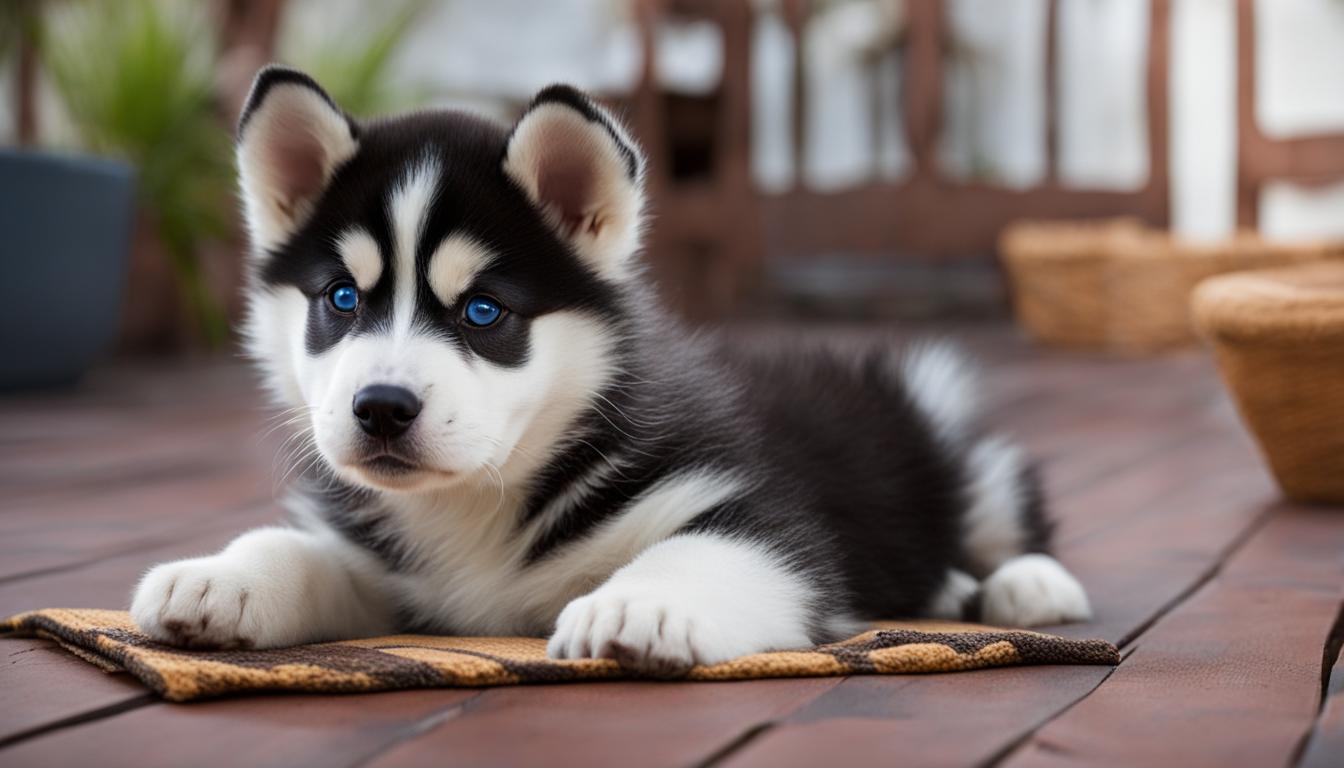
Deciding between indoor potty training and outdoor potty training is a significant decision for new puppy owners. Both have their merits, and understanding the nuances of each can help you navigate the potty training challenges you may face with your furry friend.
Indoor training is particularly convenient for those living in apartments or areas with extreme weather conditions, as it doesn’t require going outside every time your puppy needs to go. This method often utilizes paper training or potty pads designed with a scent to encourage your puppy to relieve themselves in the right spot. However, it’s essential to gradually transition this habit to the outdoors to avoid any long-term confusion.
On the flip side, outdoor potty training is seen as more traditional and encourages puppies to only do their business outside from the start. This method requires a safe space for your puppy to use consistently and creates a clear boundary between their living space and bathroom area.
- Indoor Potty Training:
- Paper or piddle pad usage
- Beneficial during bad weather
- Gradual transition to outdoors
- Outdoor Potty Training:
- Immediate outdoor habits
- Requires consistent safe space
- Clear distinction for puppy
Your lifestyle, the dog’s personality, and your living situation will heavily influence your choice. Whether you’re leaning towards indoor convenience or the traditional outdoor approach, remember that consistency and patience are your best tools for success.
Crate Training Vs. Pad Training a Siberian Husky Puppy
When deciding on the best approach to potty train your Siberian Husky, you may be contemplating the merits of crate training versus pad training. Both methods have their advantages, and understanding them can help you make the best choice for your furry friend. Crate training is widely lauded for its crate training benefits such as fostering natural canine instincts to keep their sleeping area clean, thus reducing house soiling. Pad training, on the other hand, offers convenient indoor solutions but may lead to some confusion during the housebreaking process.
Let’s delve into a comparison of these two popular training methods to give you a clearer picture:
| Crate Training | Pad Training |
|---|---|
| Encourages puppies to hold their bladder and bowels | Provides a designated indoor area for quick relief |
| Minimizes nighttime accidents | Convenient for apartment living or bad weather |
| Helps with transitioning to outdoor potty routines | May cause confusion with other household items |
| The crate size can be adjusted as puppy grows | Pads can be used then gradually moved outside |
It’s essential to remain consistent in your method of choice and to provide ample supervision. You’ll need to guide your puppy with gentle corrections and plenty of praise when they get it right. Whether it’s the robust boundary-setting of crate training or the flexibility of pad training, each method requires dedication to ensure your puppy grows into a well-mannered Siberian Husky.
Remember, accidents happen, but with patience and practice, your new companion will develop the necessary skills for a happy, hygienic home. Both crate training benefits and pad training advantages can contribute positively to your pet’s development, with the ultimate goal being a well-trained companion free from house soiling habits.
Frequently Asked Questions About Potty Training a Siberian Husky Puppy
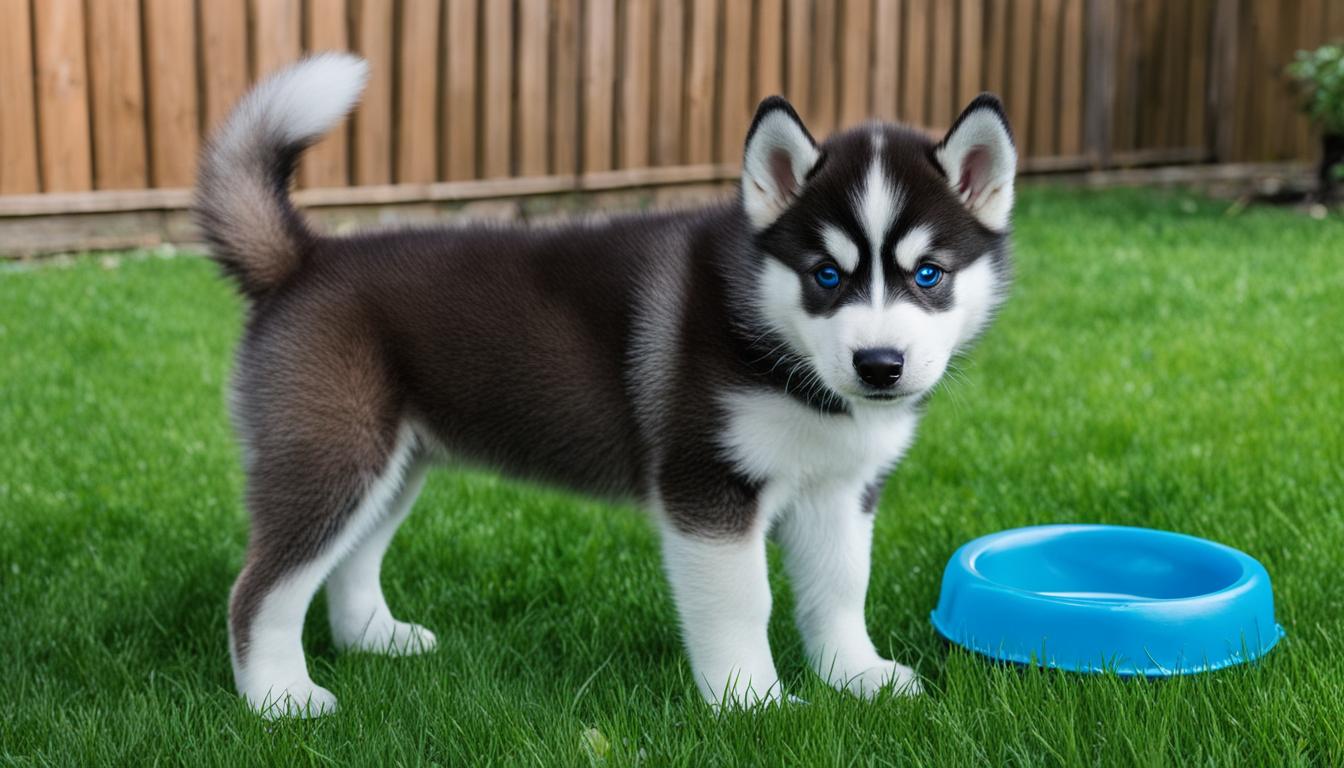
Embarking on the journey of potty training your Siberian Husky puppy can raise a multitude of questions. To guide you through this vital process, we’ve compiled some common inquiries that Husky owners like you often have. Understanding the potty training duration, navigating through potty training challenges, and learning from potty training mistakes can lead to a well-trained pup and a harmonious home environment. Here are the answers that can help you on your way to successful potty training.
How Long Does It Typically Take to Potty Train a Siberian Husky Puppy?
Generally speaking, if you’re diligent in your training routine, you could see a potty-trained Siberian Husky puppy in as little as a week. However, don’t be discouraged if your furry friend takes a little longer, as some puppies may require several weeks to fully grasp the concept.
What to Do if Your Siberian Husky Puppy Won’t Pee Outside The House?
To encourage outside bathroom habits, ensure that the potty spot is distraction-free and that you’re using it consistently. Patience and positive reinforcement when they do go outside are key.
Should You Use Treats When House Training a Siberian Husky Puppy?
Yes, using treats in training can be a helpful tool for positive reinforcement. Yet, it’s important not to rely solely on treats—plenty of praise and cuddles also play a significant role in reinforcing good behavior.
Is It Better to Use Puppy Pads or Go Straight to Outdoor Potty Training for a Siberian Husky Puppy?
Directing your Husky to outdoor potty training often leads to less confusion. While puppy pads can be useful, particularly during bad weather or for puppies that have not yet had all their vaccinations, they can sometimes delay the ultimate goal of consistent outdoor elimination.
What Should I Do if My Siberian Husky Puppy Does Not Seem to Be Learning to Potty Train Correctly?
Reassess your training strategies to ensure that you’re being consistent and clear in your methods. Dogs are creatures of habit, and a disrupted routine can often lead to potty training challenges.
What Should I Do if My Siberian Husky Puppy Starts Accidents in The House?
Accidents can happen, and when they do, it’s essential to calmly clean up and redirect your puppy to the correct potty spot. Avoid any negative reactions that may create a fear association with going to the bathroom.
What Are Some Common Mistakes That Are Made When Potty Training a Siberian Husky Puppy?
A lack of consistent schedule, not recognizing the signs that your puppy needs to go, and impatience can derail your potty training efforts. Remember, creating a positive learning environment is part of a successful potty training process.
What Are Some Potential Consequences of Not Potty Training a Siberian Husky Puppy?
If left untrained, a puppy may develop habits that can lead to health risks due to bacteria, potential damage to household items, and added stress for everyone in the home, which are all consequences of improper training.
What Can I Do to Help My Siberian Husky Puppy Feel More Comfortable Going Potty Outside?
Remain by your puppy’s side during outdoor potty trips, offering comfort and positive reinforcement. This support can greatly increase their comfort level and willingness to eliminate outside.
How Old Does My Siberian Husky Need to Be Before I Can Start Potty Training?
Potty training can begin the moment you bring your Husky puppy home, which is generally around eight weeks of age. Early and consistent training can lead to better long-term habits.
How Often Should I Take My Siberian Husky Puppy Outside to Go Potty During The Day?
To establish a solid routine, take your puppy outside at least every two hours, and always after meals, playtime, and naps. Frequent outings help to instill a dependable potty schedule.
What Should I Do if My Siberian Husky Puppy Has an Accident Inside During Potty Training?
Maintain a calm approach while cleaning up the accident with an enzymatic cleaner to remove any scents that could attract them back to the same spot. Use this as an opportunity to reinforce the correct behavior without causing any distress to your puppy.
Last Thoughts on Siberian Husky Puppy Potty Training
As we wrap up on the journey of potty training your Siberian Husky puppy, remember that perseverance, consistency, and positive reinforcement are the pillars of potty training success. With a structured routine in place, your commitment to regularly scheduled feeding times and vigilant supervision will play a critical role in swiftly and successfully housebreaking your puppy.
Your dedication to preventing accidents before they happen is essential, laying down a solid foundation for good potty habits.
Maintaining patience is pivotal. Each time your Siberian Husky succeeds, shower them with praise and show your affection. This type of positive reinforcement in potty training strengthens the bond between you and your furry friend, simultaneously encouraging them to repeat the desired behavior. Also, by being attentive and responding to your puppy’s subtle cues to go potty, you are reinforcing their good habits, ensuring these lessons are learned for a lifetime of reliability.
Ultimately, the cleanliness, safety, and unbreakable bond that result from your hands-on involvement during these formative weeks of training are the rewards that await. As your Siberian Husky matures and these lessons become second nature, you’ll enjoy the fruits of your labor — a well-trained companion whose understanding of potty protocols makes for a harmonious living environment. Keep up the excellent work, and relish in the joy of your beautifully trained Siberian Husky who now confidently knows just where and when to do their business.

